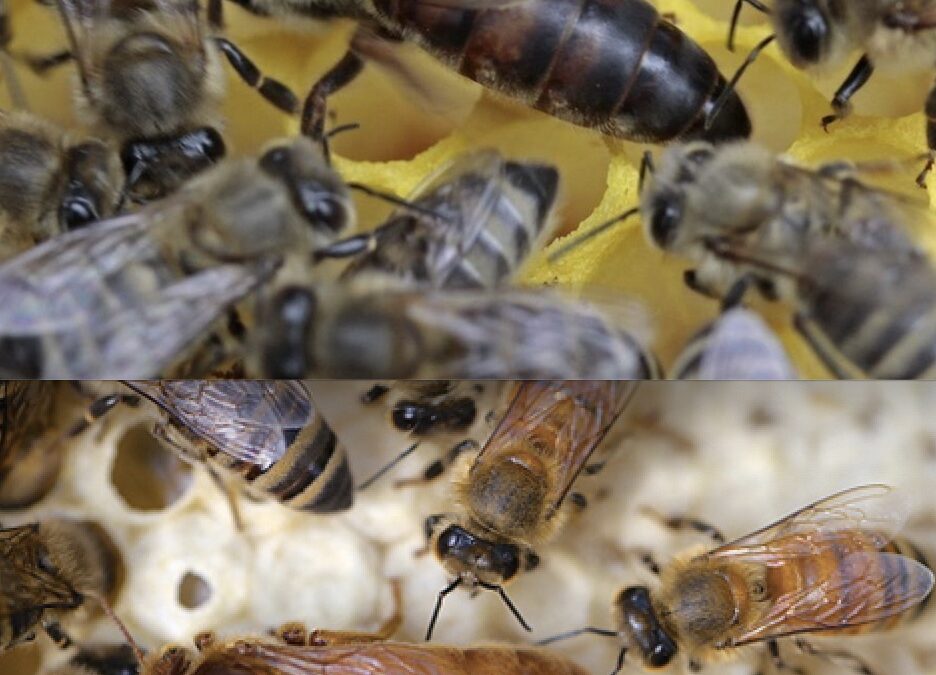The Carniolan and Italian queens refer to different subspecies of honey bees, known for their distinct traits and characteristics. Here’s a breakdown of the differences:
- Origin:
- Carniolan bees (Apis mellifera carnica) originate from the Balkan region, particularly Slovenia, parts of Austria, and the Danube River valley.
- Italian bees (Apis mellifera ligustica) come from the Italian peninsula and parts of the Mediterranean.
- Temperament:
- Carniolan bees are known for their docility and calmness. They are less prone to aggression, making them easier to manage, especially for beginner beekeepers.
- Italian bees are also generally gentle and easy to work with but can be more active than Carniolans.
- Swarming Behavior:
- Carniolan bees have a higher tendency to swarm compared to other bee subspecies. They are highly responsive to environmental conditions and can rapidly expand their colony size, leading to swarming if not managed properly.
- Italian bees are less likely to swarm and are known for maintaining stable and large colonies.
- Brood Rearing:
- Carniolan bees are highly adaptive to environmental changes. They can rapidly adjust their brood rearing based on the availability of resources, reducing their population during scarcity and quickly expanding when resources are abundant.
- Italian bees maintain a steady rate of brood rearing throughout the season and require substantial resources to support their typically large populations.
- Foraging Behavior:
- Carniolan bees are excellent foragers in cooler and overcast weather, making them well-suited for more temperate climates.
- Italian bees are prolific foragers known for their ability to collect significant amounts of nectar and pollen, which makes them excellent honey producers in warmer climates.
- Disease Resistance:
- Carniolan bees are noted for their resistance to certain pests and diseases, such as varroa mites.
- Italian bees are generally robust but can be more susceptible to pests like varroa mites and need careful management to prevent outbreaks.
These differences make each type suited to different environments and beekeeping practices. The choice between Carniolan and Italian queens often depends on the specific goals of the beekeeper, local climate conditions, and the beekeeper’s management style.

